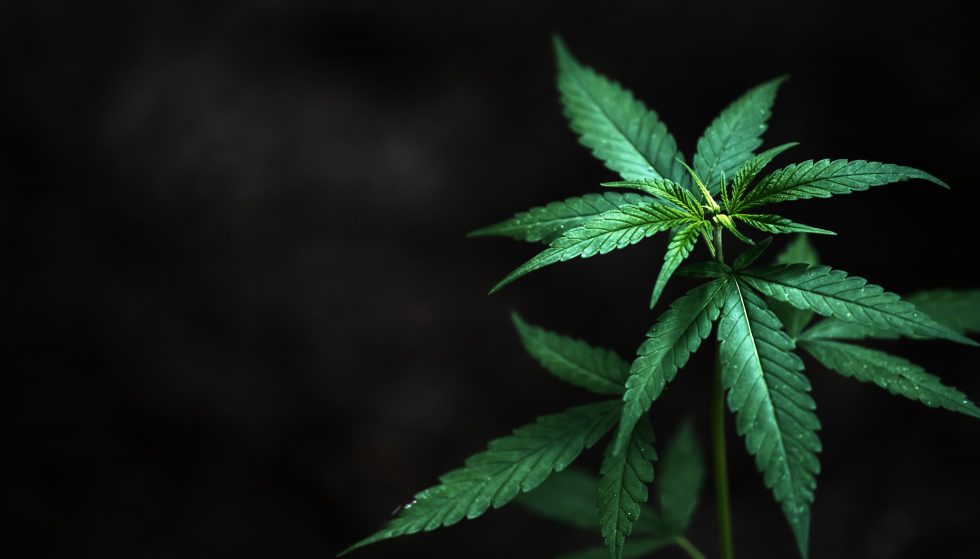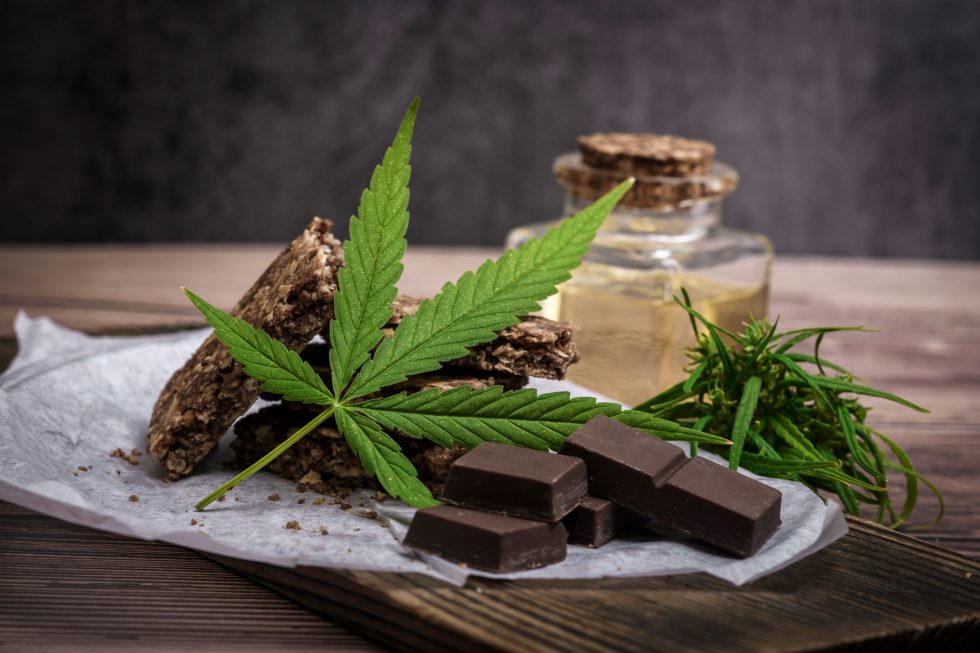Few plants have an as controversial history as marijuana. The fact that every state has its own laws and guidelines about the use of cannabis products only causes more confusion and generates more questions. Once believed by many to be a dangerous “gateway drug” that was often a precursor to the use of other, more hazardous substances, the stigma around marijuana has since begun to shift. Now, an increasing number of states have begun to support legalization and recognize marijuana as a legitimate and effective form of treatment and medication.
What, exactly, is marijuana? In short, the term “marijuana” refers to any combination of stems, seeds, or flowers that come from the Cannabis sativa plant. The cannabis plant contains two main cannabinoids, THC and CBD, with THC being the chemical responsible for causing the psychoactive effects of the drug.
While marijuana is still illegal to possess, sell or consume at the federal level, many individual states have decided to legalize it for medical users, recreational users, or both.

How Is Marijuana Used?
These days, medical marijuana patients and other consumers can use marijuana and medical marijuana through a number of different methods. Popular methods include:
-
Smoking and vaping it
Many marijuana and medical marijuana users prefer to smoke or vape the cannabis products they purchase from a marijuana dispensary. Some pack the drug into a glass or metal pipe, while others use bongs, joints, or blunts to smoke their marijuana products. Vaping marijuana has also become increasingly popular in recent years. Some users prefer to use a concentrated oil form of the plant in a vape pen or e-cigarette device.
-
Consuming it
Many people also consume their marijuana, whether in the form of liquids or solids. Some users like to brew it into tea, for example, while others make butter from it, which they then use to make cookies, brownies, etc. In states where medical marijuana or recreational marijuana is legal, users may be able to purchase it from dispensaries in lollipop, candy, soda, or another form.
-
Using it topically
Some people prefer to use marijuana in topical form. Lotions, lubricants, and essential oils containing cannabis are just some of the ways users apply marijuana products directly to the surface of their bodies.
-
Using a tincture
Some people also use marijuana by taking a few drops of a product under their tongues. This allows users to absorb the cannabinoids, or the compounds found in cannabis, directly into their bloodstreams, which may mean faster relief for medical marijuana patients.
-
Dabbing
This is another form of consuming marijuana that has grown in popularity in recent years. Dabbing involves consuming THC-rich resins in oil, wax, or shatter form, and it often means users receive a high dose of THC all at once.
What Are the Side Effects of Using Marijuana?
The side effects associated with marijuana usage vary broadly from one user to the next. They also fluctuate based on the amount taken and the user’s level of tolerance. However, certain side effects associated with the drug undergo reporting more often than others. Many users find that it leads to dry and red eyes and increased hunger (also known as “the munchies,”) while headaches, lightheadedness, drowsiness, and fatigue are also commonly reported side effects.
Some users experience more severe side effects after using marijuana than others. In some instances, nausea and vomiting, disorientation, and hallucinations may occur. An increased heart rate and paranoia have also been linked to marijuana use.
Using marijuana may also have specific effects on your mental state. Many people report that they become more creative or find things more humorous when they are under the influence of marijuana than they do otherwise. Using cannabis may also make colors appear brighter and otherwise impact the senses. Some users also report having more of an appreciation for music or beauty when using marijuana.
Whether using marijuana causes relaxation is something that may vary from person to person. Some users claim that it makes them relaxed like a glass of wine at the end of the day. Others say it does the opposite of relaxing them; instead, it causes them to develop paranoia or anxiety.
What Are the Potential Health Benefits of Marijuana?
While much is still unknown about the effectiveness of medical marijuana on certain medical conditions, researchers are learning more and more about it as a treatment for serious or chronic conditions. Currently, Americans use medical marijuana for medicinal purposes to treat chronic pain more than any other condition or symptom.
Some tout the use of medical marijuana over opiates and other forms of pain relief because there is less chance of users developing addiction. It also gives patients who are unable to take certain forms of pain relief, such as Advil, an alternative pain-relief method.
In states that recognize and allow the use and sale of medical marijuana, many patients use it to treat nausea, muscle spasms, calm muscle spasticity, or ease pain. People with cancer, multiple sclerosis, Parkinson’s disease, fibromyalgia, endometriosis, or other conditions characterized by chronic pain can benefit from it.
Marijuana sometimes also undergoes use as an appetite stimulant for cancer patients and others who may struggle with a decreased appetite. Patients who have issues such as irritable bowel syndrome or Crohn’s disease may also benefit from pain relief associated with marijuana.
Researchers are also collecting information about how using marijuana impacts soldiers and veterans experiencing post-traumatic stress disorder. While much remains unknown about the effectiveness of cannabis to treat PTSD, early indications suggest that it may prove to be a highly effective form of treatment for this audience.
What Are the Other Effects of Marijuana?
While studies suggest that marijuana use may lead to a number of health benefits, questions remain about how it may impact your brain and whether it poses risks for non-users who might be in the vicinity during use.
There is still much to learn about the long-term effects associated with marijuana use. However, some studies have suggested that it may have long-term adverse effects on the brain. Several studies involving rats indicated that when younger individuals use marijuana, it may result in an altered reward system. Several studies have also focused on whether using marijuana may impact IQ levels, although such studies have produced conflicting results.
Studies have also suggested that links exist between using marijuana and experiencing memory loss and having trouble processing new information. However, there is not currently concrete evidence available indicating that either correlation is legitimate.
Many users also have questions about whether secondhand marijuana smoke may be dangerous to those around them. The effects of tobacco smokers and secondhand cigarette smoke on children and non-smokers have been well-documented. However, much less is known about the impact of secondhand marijuana smoke, and very few studies on the subject have ever taken place. However, until more information becomes available, it may be safer to assume that secondhand marijuana smoke may be hazardous, particularly for children and individuals who have compromised immune systems.
Synthetic marijuana, a human-made substance that looks similar to a traditional marijuana plant, is another form of the drug, but there are risks involved in using it. In some cases, this usable marijuana form may lead to psychotic effects, including confusion, paranoia, and hallucinations. Other side effects linked to its use include a rapid heart rate, suicidal thoughts, vomiting, and violent behavior.

What Treatment Is Available for Marijuana Use Disorder?
Considerable disagreement exists when it comes to whether you can develop an addiction to marijuana. However, there is a general consensus that some users do develop drug abuse and marijuana use disorders due to a dependence on the substance.
Research shows that your chances of developing a marijuana dependency increase if you start using it at a young age. Those who begin using marijuana before age 18, for example, are four-to-seven times more likely than others to develop a marijuana use disorder. According to some estimates, about 30% of all users also have marijuana use disorders.
So, when might a marijuana use disorder cross into addiction territory, and what types of treatment are available for users prone to drug abuse? Most agree that smoking marijuana becomes an addiction if the user continues to use cannabis even after it has become an issue in other areas of their life.
Common signs a marijuana smoker has developed a marijuana addiction or a marijuana use disorder include:
- Craving cannabis
- Consuming more than is necessary
- Experiencing problems at school or work
- Abandoning other activities once enjoyed
- Developing a high tolerance to marijuana
- Experiencing withdrawal after stopping using cannabis
Some believe that the number of symptoms a user has helps determine whether his or her use of cannabis has become problematic. If you have two or three of the symptoms outlined above, for example, you may have a mild cannabis use disorder. If you have four or five of the above symptoms, you may have a moderate dependency, while having six or more symptoms suggests a serious dependency.
Regular marijuana users may also experience symptoms of marijuana withdrawal when they stop or cut back on their use of the drug. Withdrawal symptoms may include the following, among others:
- Depression
- Irritability
- Sleep issues such as insomnia or restlessness
- Anxiety
- Sudden weight changes
- Decreased appetite
- Abdominal pain
- Flu-like symptoms
Some studies have suggested that female users of marijuana are more prone to experiencing withdrawal symptoms after substance abuse than men. However, more research is necessary before this may be proven.
There are not currently any medications approved by the U.S. Food and Drug Administration to treat marijuana drug abuse or cannabis dependency. However, several behavioral treatment methods have shown promising results in terms of reducing dependency on cannabis. These treatment methods include:
-
Cognitive-Behavioral Therapy
Known as “talk” therapy. It consists of developing strategies that help the user identify what makes them want to use, and figure out how to exercise more self-control.
-
Contingency Management Therapy
Contingency management therapy involves rewarding someone who successfully avoids a target behavior, such as smoking or otherwise using marijuana, or, conversely, penalizing someone who does not abstain from the target behavior. In other words, this approach involves giving marijuana users rewards for remaining drug-free and penalizing them for drug use.
-
Motivational Enhancement Therapy
Motivational enhancement therapy involves encouraging someone with a cannabis dependency to use their internal resources to avoid the behavior and pursue appropriate treatment. This type of intervention seeks to encourage quick, internally motivated change. It may undergo use in conjunction with other types of therapies to enhance effectiveness.
How Are Marijuana Laws Changing?
The laws surrounding marijuana are constantly in flux across Utah and the nation. The rules and guidelines regarding purchasing, possessing and growing the plant vary broadly from one place to the next. Despite widespread calls for marijuana legalization, marijuana currently remains illegal for all users at the federal level.
Medical marijuana laws are also in flux. In Utah, the use of medical marijuana is legal, provided you meet certain guidelines and possess a valid Utah medical cannabis card from the Utah Department of Health. Currently, the state of Utah is among those that do not allow for recreational marijuana use. This means that anyone charged with marijuana possession, possession of narcotics, or a related offense who does not have a valid cannabis card may face criminal sanctions.
However, many states that currently have marijuana prohibition laws in place are introducing new ballot measures in an effort to allow for its use.

